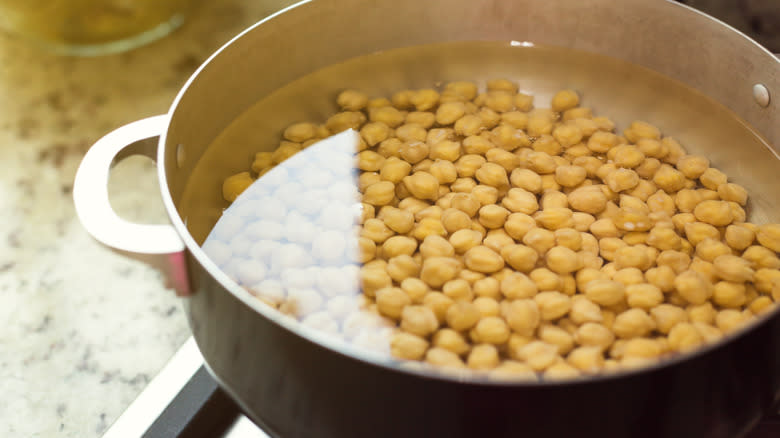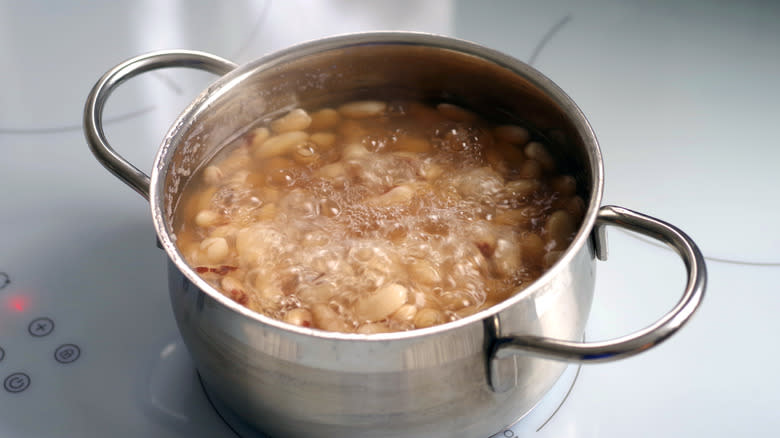The Reason You Should Never Let Beans Reach A Strong Boil

Pinto, cranberry, garbanzo, navy, lentils, cannellini, black, kidney — the list of dried beans available at a market near you is probably pretty lengthy. So, why not take advantage of this colorful selection instead of stocking up on the same old canned varieties? After all, dried beans keep just as well, and cost a lot less. They even boast better flavors and textures than their tinned counterparts. The one consideration to bear in mind is that dried beans need to be handled with care. Rather than let beans tumble around aggressively in a bubbling sauce pot, take a more delicate approach for better beans.
Good beans take time. In fact, some might consider cooking dried beans as an exercise in patience because it's hard to expedite the process without sacrificing quality. It's for this reason that letting beans cook at a rolling boiling is never a good idea. While higher temperatures might appear to speed up the process, boiling for an extended period of time will only cause the cooking liquid to evaporate faster than the dried beans can absorb it. As a result, skins can burst, affecting textures and making for a less than aesthetic batch of legumes. Additionally, this can lead to uneven cooking as some beans split and turn to mush, leaving others to remain rock hard. Instead, the ideal cooking conditions for dried beans fall somewhere below boiling point, but more on that later.
Read more: Hacks That Will Make Boiling Your Eggs So Much Easier
To Avoid Battered Or Unevenly Cooked Beans, Follow These Tips

Making half-cooked legumes with busted skins a thing of the past is easy with the right know-how. Before they even make their way into a pot, it's imperative that you select the freshest possible beans. Since they continue to dry over time, using quality legumes is a simple way to guarantee that they will behave exactly how you might expect when they're cooking.
Along with the right primary materials, it's almost always a good idea to soak beans in water. Soaking gives hard beans a chance to rehydrate a bit. Add some salt and now that briny liquid can help soften the skins so that water can better enter the beans' hard centers, allowing them to evenly cook. Plus, because moisture is able to permeate the skins more easily, the beans will hold onto their shape better, as well.
Following a good soak, beans can be cooked. Again, plain water works, but some swear by using stock or adding in a collection of aromatics, herbs, and spices. The vital piece of information you need to remember is that beans must be simmered. Just shy of boiling, simmering happens at a slightly lower temperature so that beans can slowly soften without bouncing around in the pot and bruising. Although it takes longer, this gentle cooking technique is worth the wait given that it allows the beans to reach their full potential — and who doesn't want that?
Read the original article on Tasting Table.

